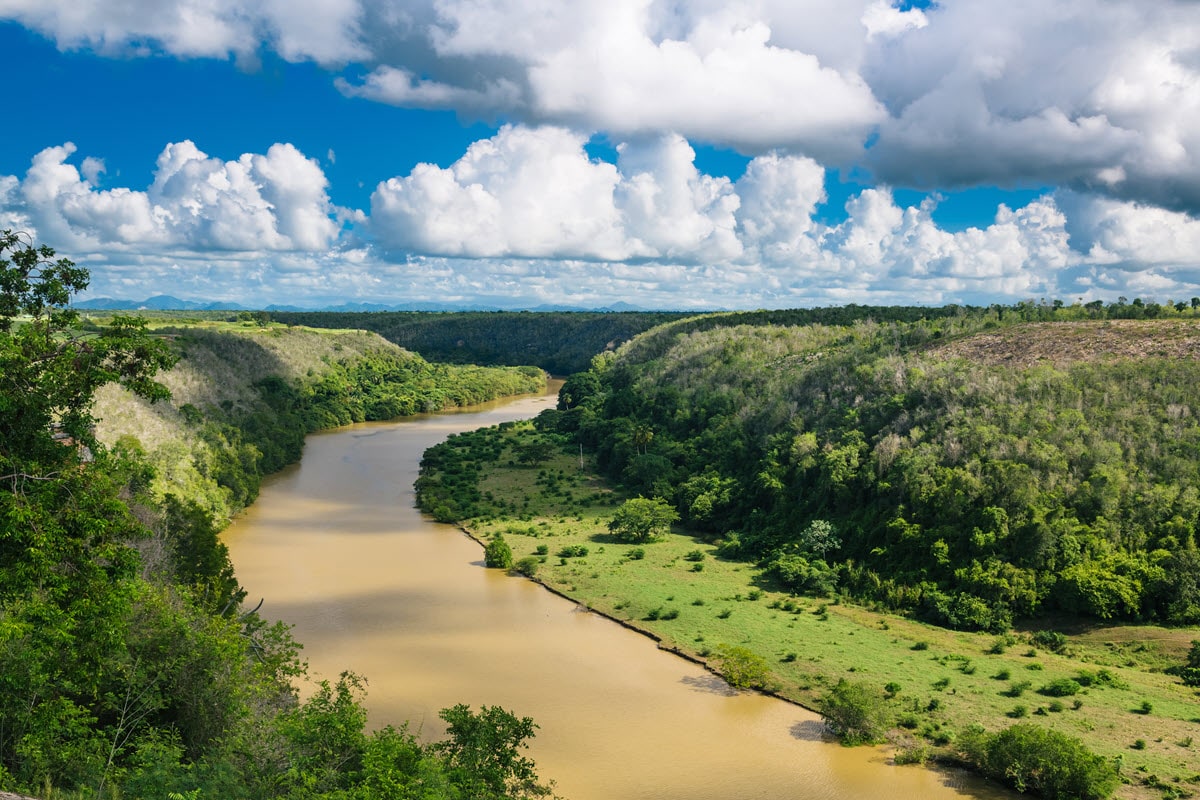The Dominican Republic is located on the island of Hispaniola, an island it shares with Haiti. Hispaniola is located in the Greater Antilles Archipelago of the Caribbean region. The Atlantic Ocean and the Caribbean sea flank this island nation. It’s also the second-largest nation in the Antilles and the third largest in terms of population. More than 6 million tourists visit the island every year.
The Dominican Republic is known for being the cradle of the Americas and being the most visited nation in the Caribbean, and it’s easy to see why. It has a year-round tropical climate, endless white beaches, and beautiful scenery. With its wide range of world-class resorts, there is something for everyone.
Beaches
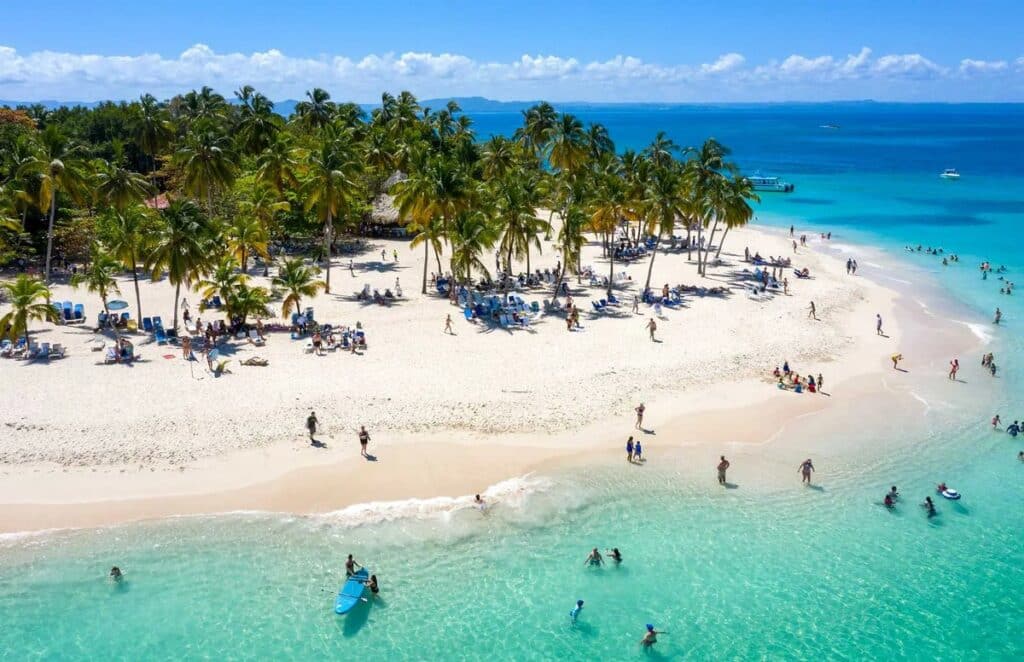
The country is synonymous with incredible beaches. You can find over 200 beaches across the Dominican Republic. Many of these beaches on the 1,288km (800 miles) long coastline are still underdeveloped and uncrowded. So you might stumble across a spot that becomes your private beach. While most of the popular beaches are brilliantly white, you even get stretches of black sand in the southwest.
World-Class Resorts
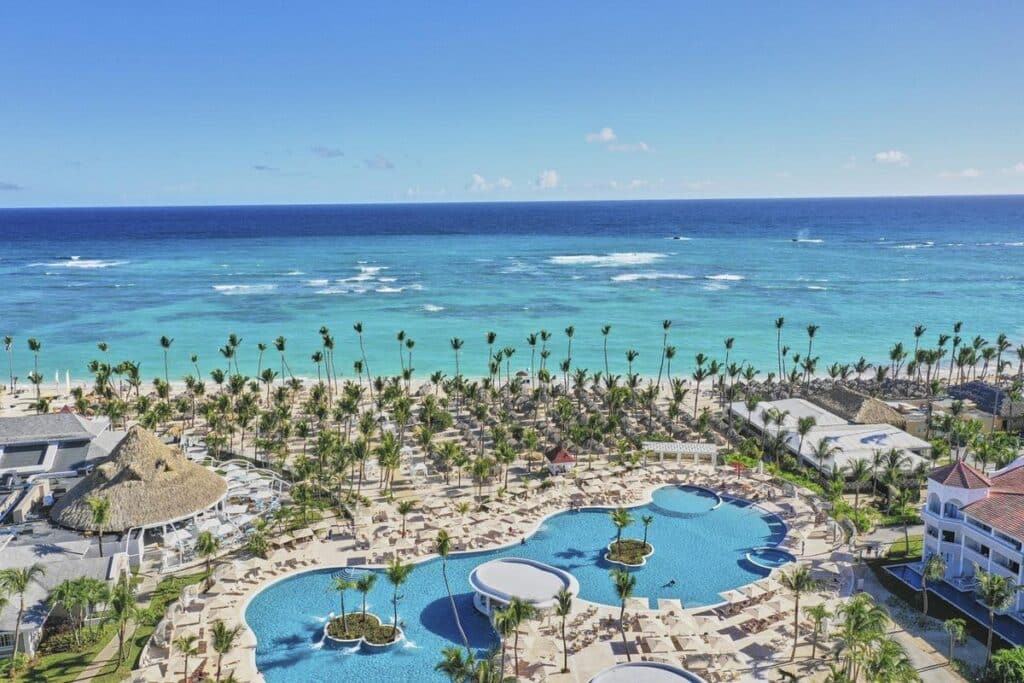
The Dominican Republic is the most visited country in the Caribbean, and you can see this fact reflected in the accommodation options. As a result, the country boasts the highest number of hotel rooms in the region, with more than 83,934 rooms and 90 all-inclusive resorts. These resorts are mainly in Punta Cana, Puerto Plata, and La Romana.
Punta Cana
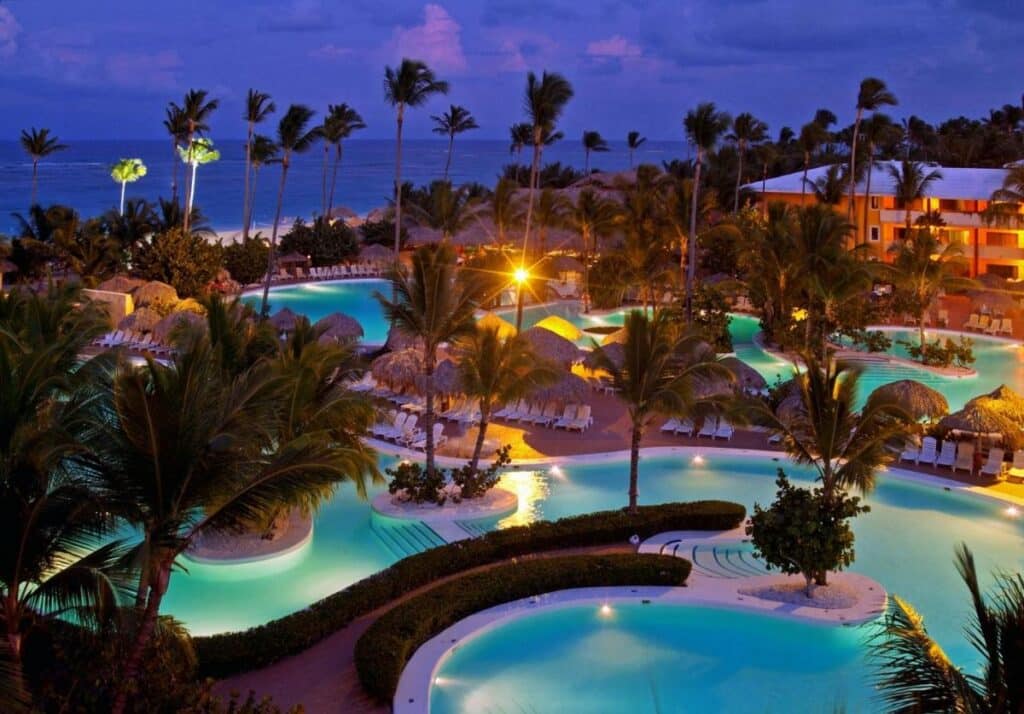
Punta Cana is one of the most popular resort towns in the Caribbean at the country’s easternmost tip. It’s the perfect beach getaway as the town is built around tourism, so you’ll find an array of lavish, all-inclusive resorts. In addition to top-notch accommodation, you’ll find a variety of activities on the 48km (30 miles) stretch of beaches and clear water. These include activities windsurfing, kayaking, sailing, and zip-lining.
Scape Park
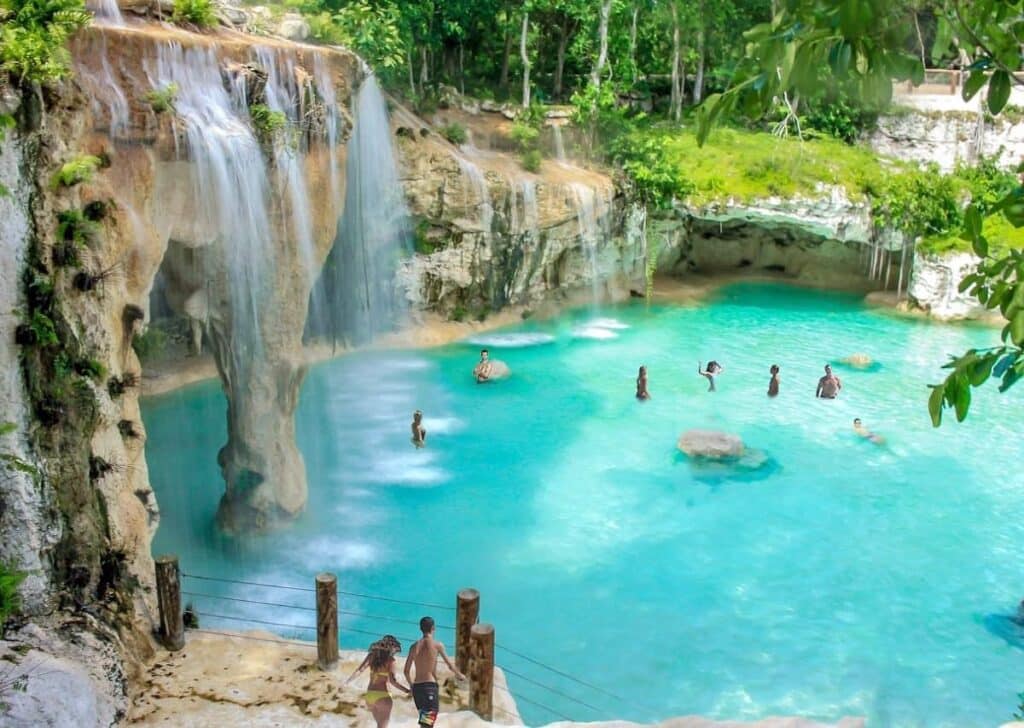
Scape Park is an all-inclusive natural theme and adventure park in Punta Cana. Visitors can enjoy various activities like zip-lining, biking, diving exploration, and cenote (natural pool) swimming. This is the perfect day trip for the entire family as there is an activity to suit everyone’s taste.
Bayahibe
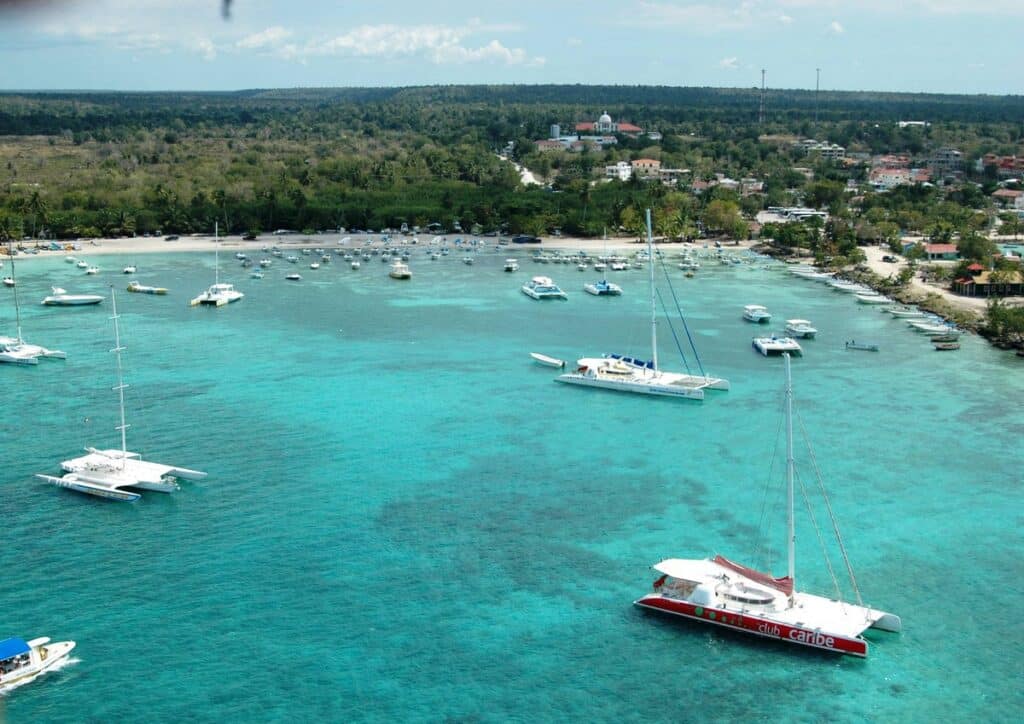
Bayahibe is a scenic fishing town that is a unique attraction in itself. It’s a smaller and calmer version than Punta Cana. It has the same white beaches and turquoise water as the rest of the island. But it has managed to preserve the authentic feeling despite increasing tourism. The beach at Bayahibe has a boat lunch where boats depart to Saona Island (a perfect day trip if you are staying in the area).
Isla Catalina
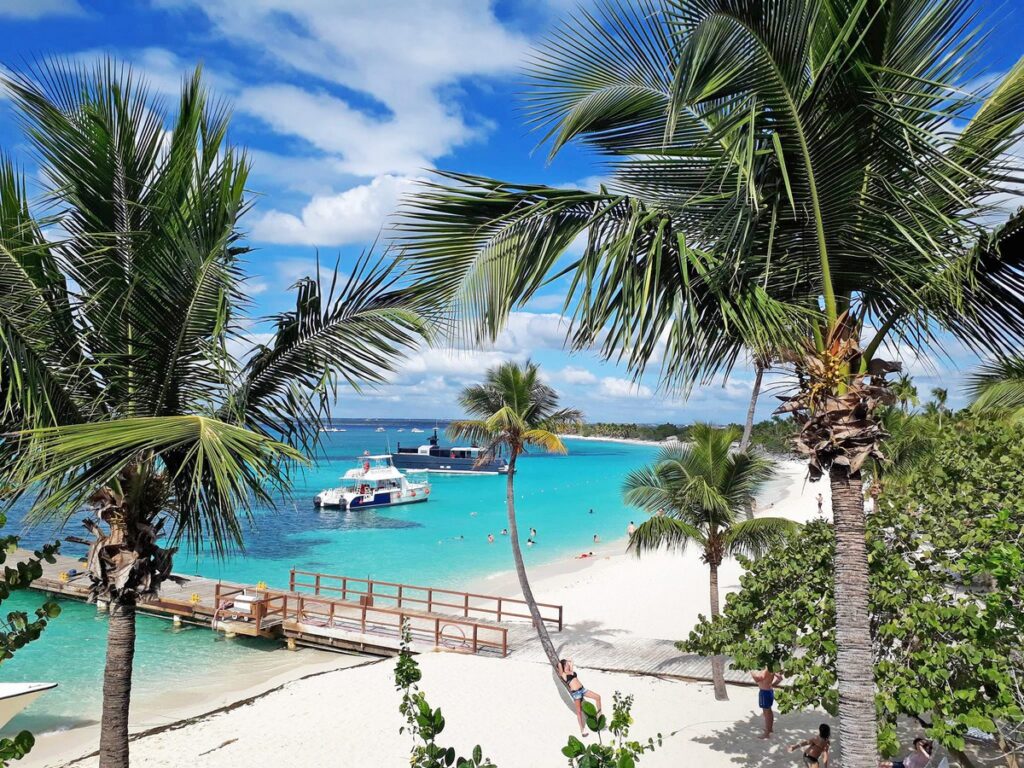
The tiny, uninhabited island is known for its shallow reefs and unspoiled nature. It’s only 2.4 kilometers (1.5 miles) off the Dominican Republic’s mainland. If you are a diver, the island is a must-visit. A highlight is the “Living Museum of the Sea.” This underwater museum is a shipwreck at 21 meters (70 feet) where divers can explore old anchors, cannons, and the many coral reefs. Other popular dives spots include the Catalina Wall and the Aquarium.
Saona Island
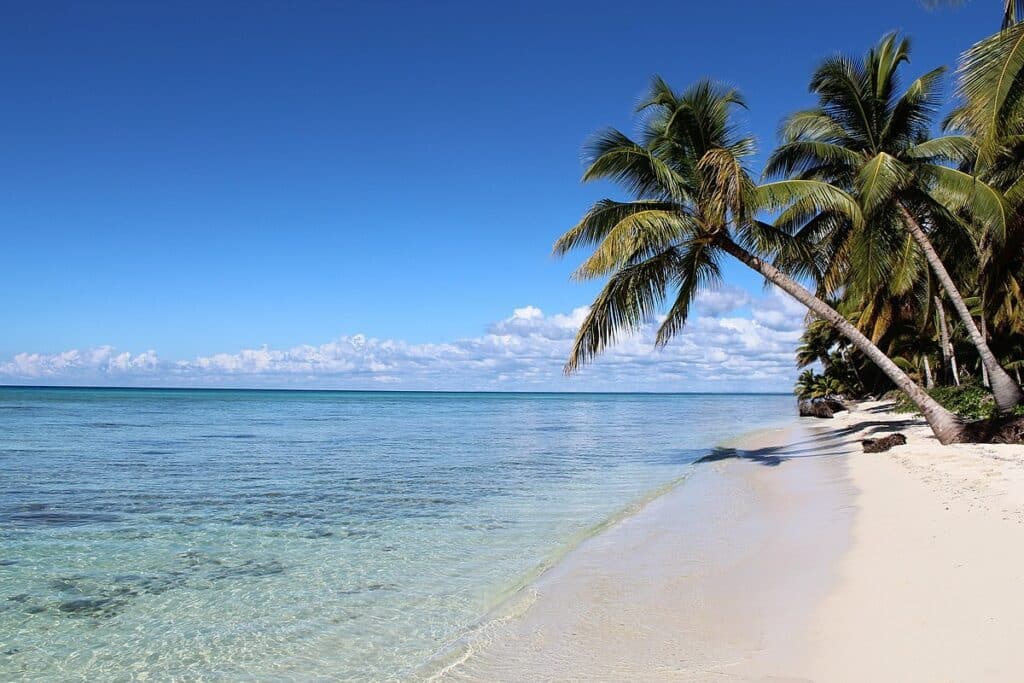
A day trip to Saona is one of the most popular activities on the island. It’s part of the East National park and is known for its coral reefs, mangroves, and palm-fringed beaches. You can even find starfish dotting the shallow water of the island. Don’t skip out on visiting the little fishing village, Mano Juan, to see the colorful shacks and visit the turtle sanctuary.
The island looks exactly like you would imagine paradise to look. Both the movies, The Blue Lagoon and Pirates of the Caribbean, filmed scenes here.
Zona Colonial
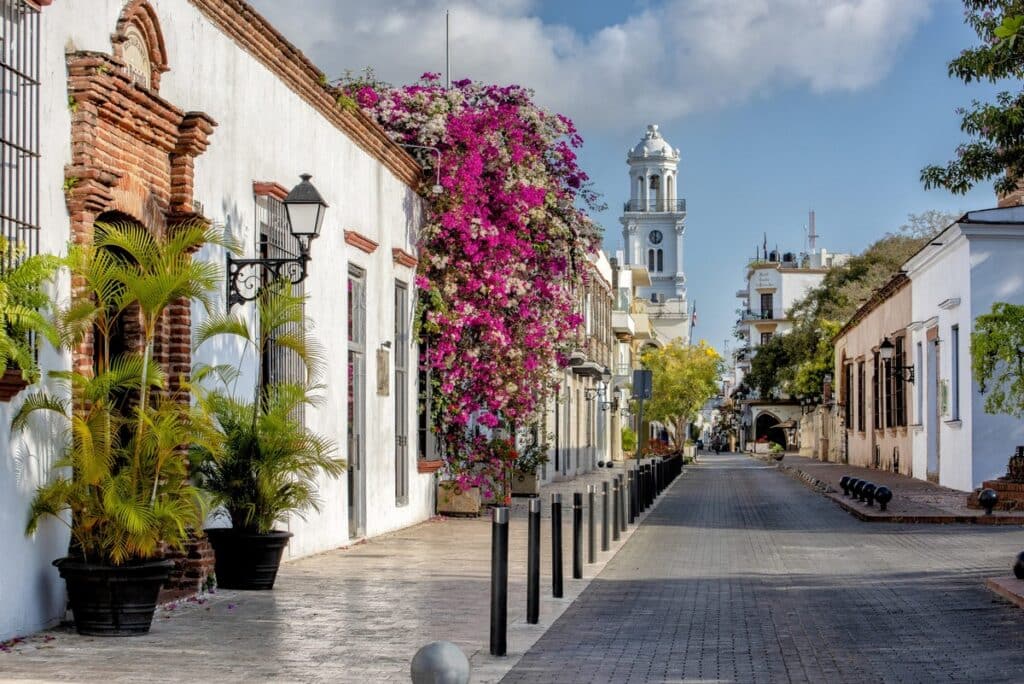
Zona Colonial is the historic central neighborhood in the country’s capital of Santo Domingo. Bartolomé Columbus, the younger brother of Christopher Columbus, found the city in 1496.
The city was almost wholly built during the 16th century and was the first spot in the Americas where Europeans settled. Therefore, it’s known today as the oldest continuously inhabited European settlement in the Americas. It’s home to more than 300 important historical sites, and UNESCO has recognized it as the only World Heritage site in 1990.
Cabarete’s Kite Beach
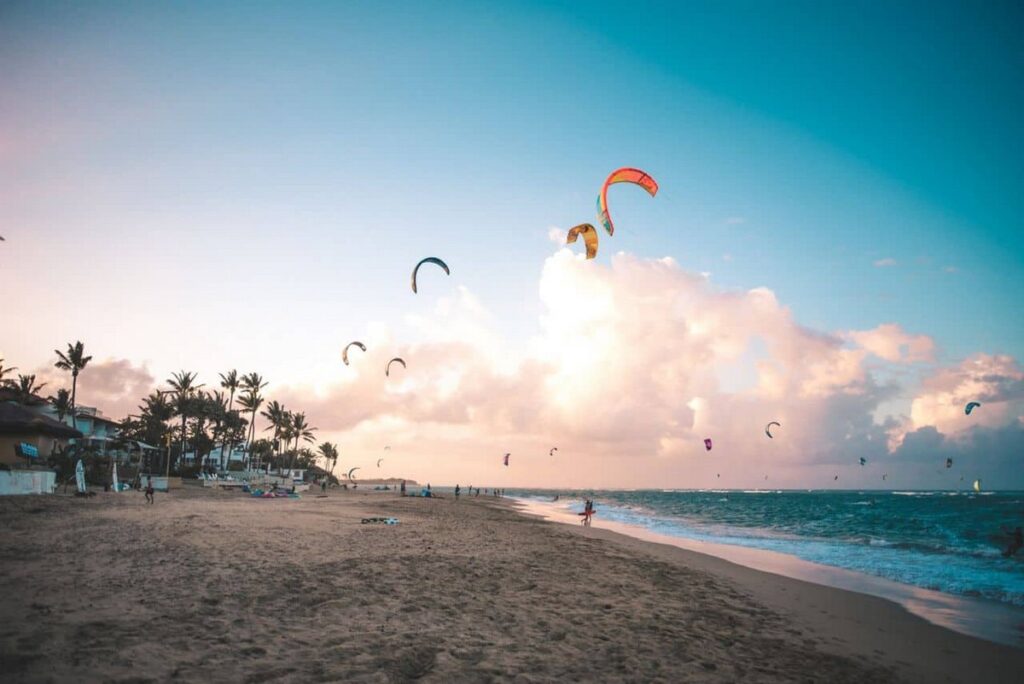
Cabarete’s Kite Beach ranks as one of the world’s top spots for watersports like kitesurfing. If you want to learn how to kitesurf, this is the perfect spot! The presence of several kiteboarding schools and the welcoming attitude toward newcomers to the sport make it easy.
It’s also home to the Master of the Ocean world championship, usually held in late February. This is an elite competition in surfing, windsurfing, kitesurfing, stand-up paddle, and wing foil.
The Three Eyes National Park (Los Tres Ojos)
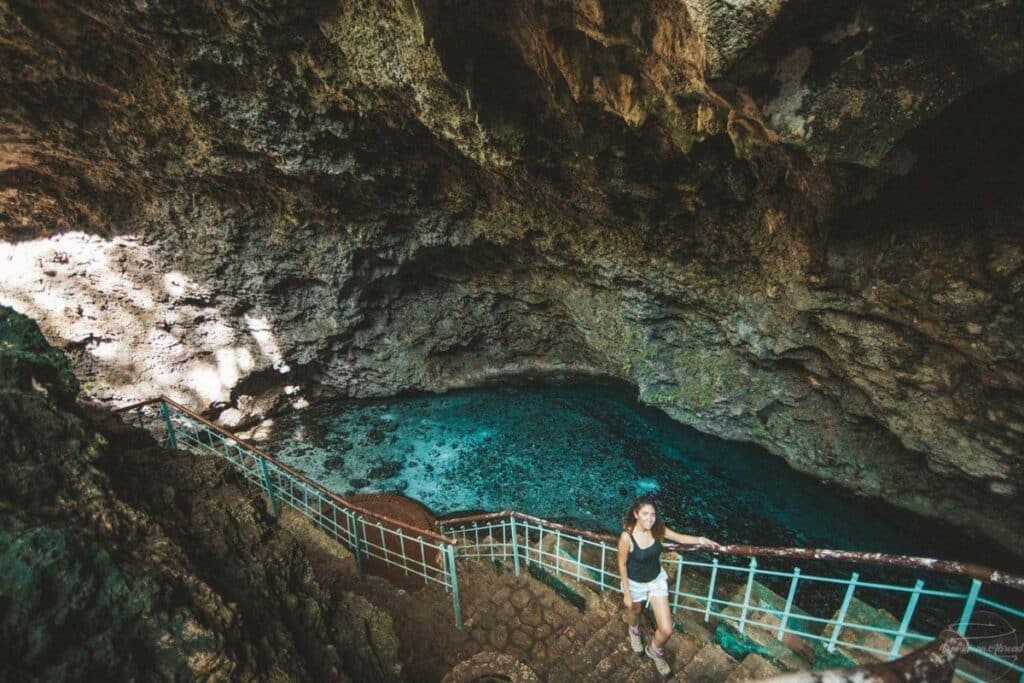
The Three Eyes National Park is a series of three lakes, known as “eyes,” located in a natural, open-air limestone cave. One of the lagoons is 12m (39 ft.) deep, another 6m (20 ft.), and the final one is only 1.5m (5 ft.) deep.
Once you enter the cave, you can explore it on foot or by boat. You’ll find these lakes in the Mirador del Este Park, a city park not far from the capital’s historic center.
Puerto Plata and Playa Dorada
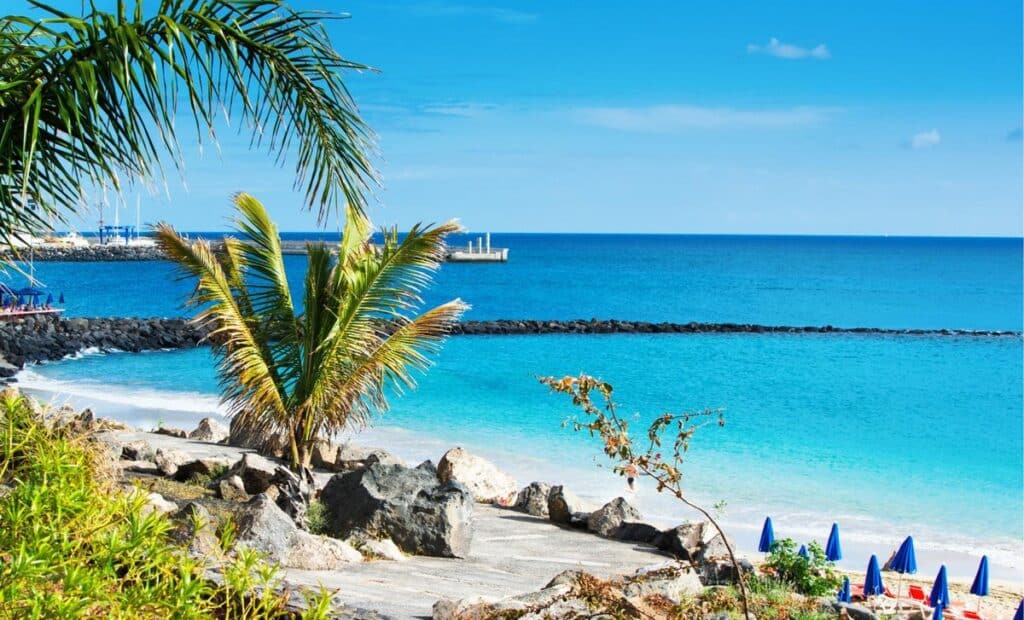
The resort town of Puerto Plata is one of the main towns where tourists head to in the country. The town’s beach, Playa Dorada, is lined with luxury resorts, although much less so than in Punta Cana. So if you are looking for a luxury getaway but want to avoid Punta Cana’s business, this is the spot for you.
The beaches are less crowded overall, and the entire place has a more laid-back feel. As fewer boats crowd the water, it’s also the perfect spot for swimming and snorkeling.
La Romana
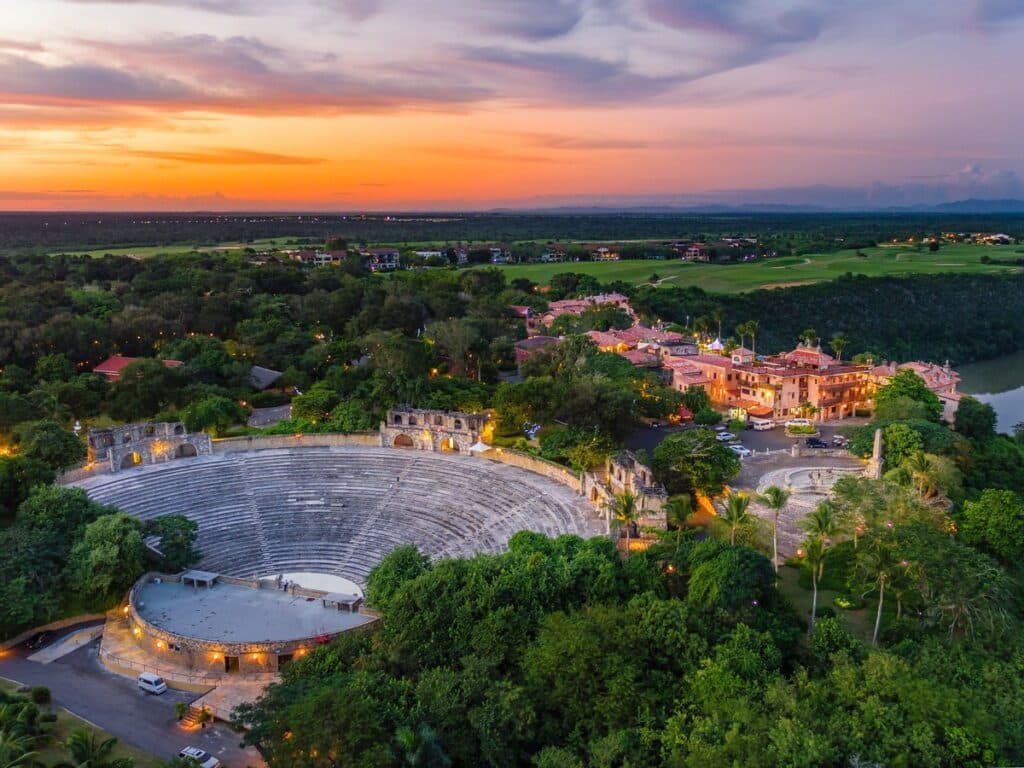
Although La Romana is one of the country’s top resort destinations, it’s still calmer than the resorts at Punta Cana. You’ll find more independent travelers here, often opting for self-cater options. The beaches rival that of the rest of the country so you won’t be disappointed if you prefer La Romana.
Altos de Chavón
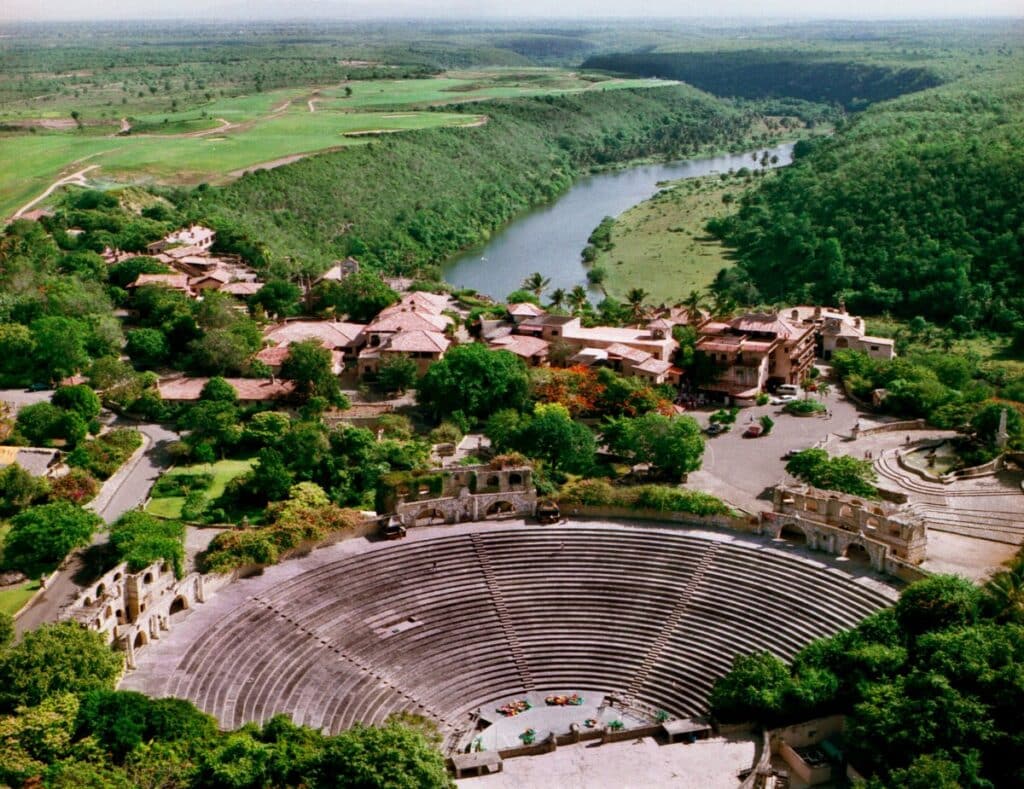
Altos de Chavón is the most popular tourist attraction in the city of La Romana. It’s a re-creation of a 16th-century Mediterranean-style village entirely made of stone. You’ll find an archeological museum, a cultural center, and an outdoor amphitheater that can seat 5000 people within the city. There are plenty of shops, restaurants, and bars to visit to keep you entertained. At the center of the village is the St. Stanislaus Church, a popular wedding spot in the country.
Las Galeras
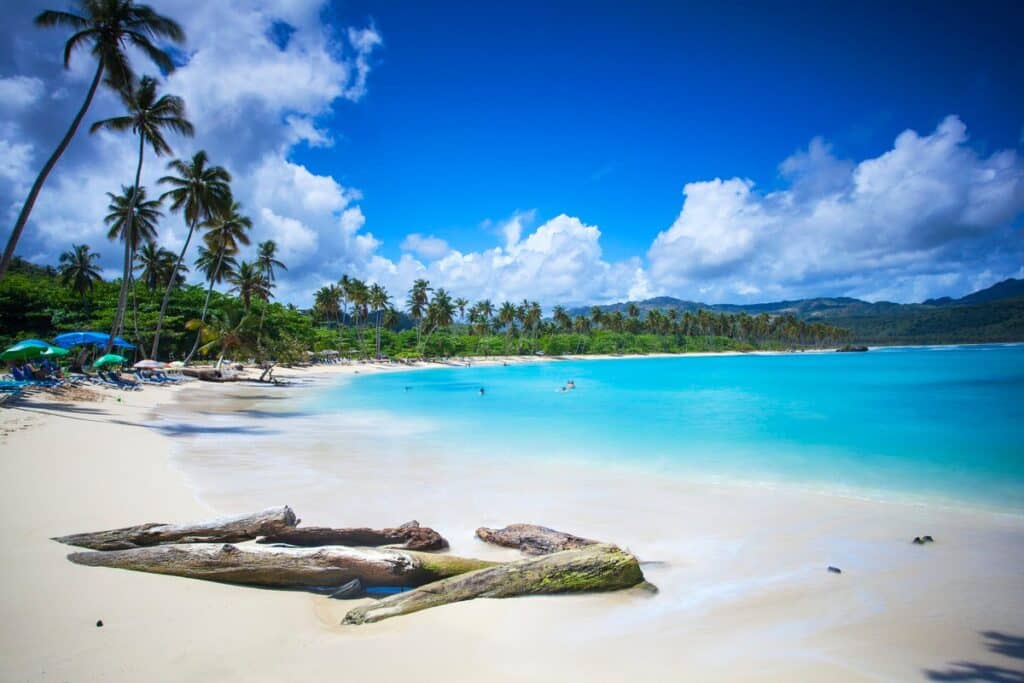
If an all-inclusive resort isn’t your idea of a holiday, head to Las Galeras. This little fishing community at the farthest tip of the Samaná Peninsula is then the spot for you. It’s a haven for laid-back independent travelers looking for an off-the-beaten-path adventure.
The town has only one main street, but you can enjoy fantastic cuisine at good prices despite it being small. If you are visiting, take a boat to a remote beach for the ultimate unique experience.
Las Terrenas
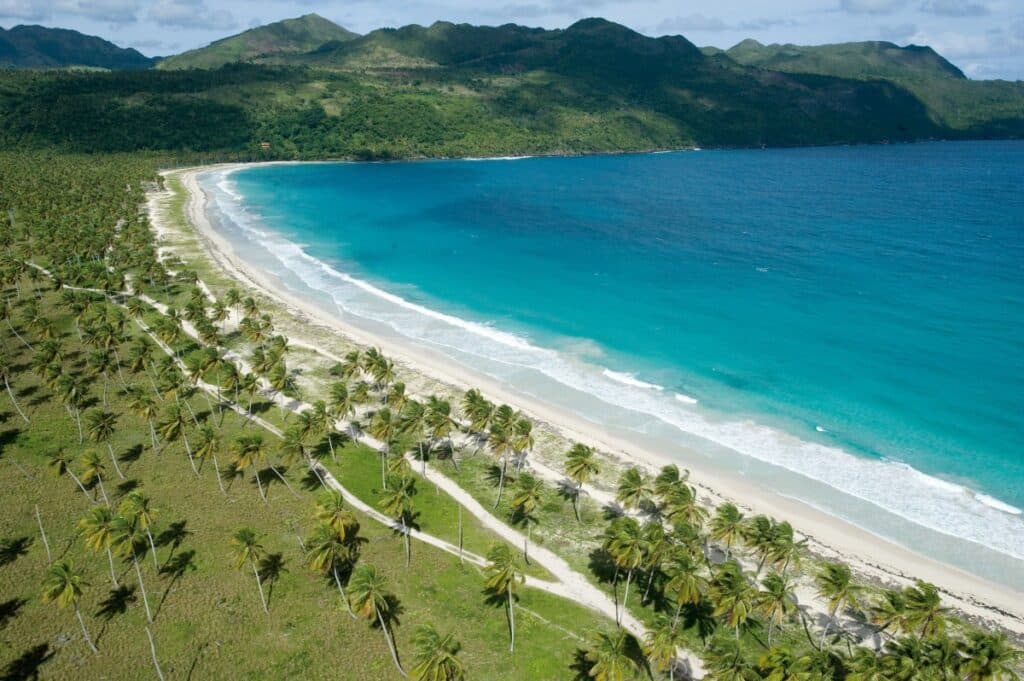
Las Terrenas is the perfect combination of a laid-back village and a cosmopolitan town. With enough beaches and restaurants to keep you entertained for days also check out the surrounding Playa Bonita and Playa Cosón. These beaches are even more spectacular, and you can enjoy fresh seafood on the side. Nights in Las Terrenas are a feast with all types of music, lounges, and bars.
Blue hole (Hoyo Azul)
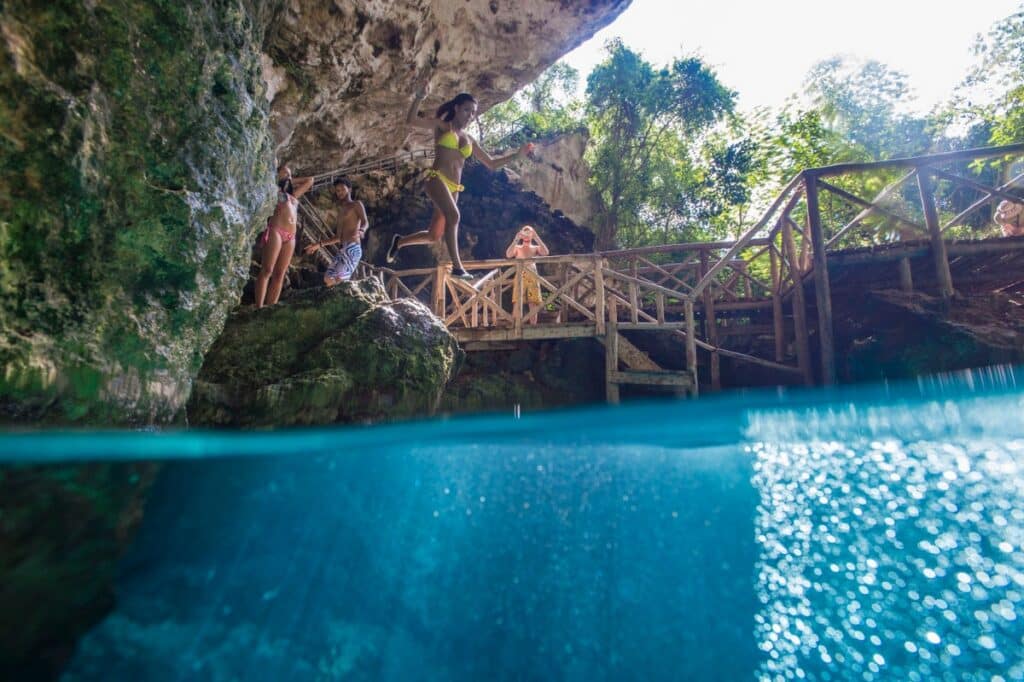
Hoyo Zul is a cenote (a sinkhole) in which you can swim in natural, cool spring water. It’s approximately 14 meters (45 feet) deep, and the water is cold, but the blue turquoise water makes swimming here a magical experience. It’s located in Scape Park, and it’s a bit of a trek to get to it, but that’s part of the journey. First, you have to cross a suspension bridge and then hike through the lush rainforest to get to this hidden gem.
Lake Enriquillo
Lake Enriquillo is the largest lake in the Caribbean as well as the region’s only body of water located below sea level. It covers an area the size of 350 square kilometers (135 square miles) and it’s located more than 43 meters (140 feet) below sea level. It’s hypersaline which means it’s saltier than seawater.
The lake is a mecca for wildlife! Keep an eye out for pink flamingos and other bird species, iguanas, and even get close to a large population of American crocodiles. You can explore the lake on a boat tour or swim in some of the natural pools.
Puerto Plata Cable Car (el Teleferico)
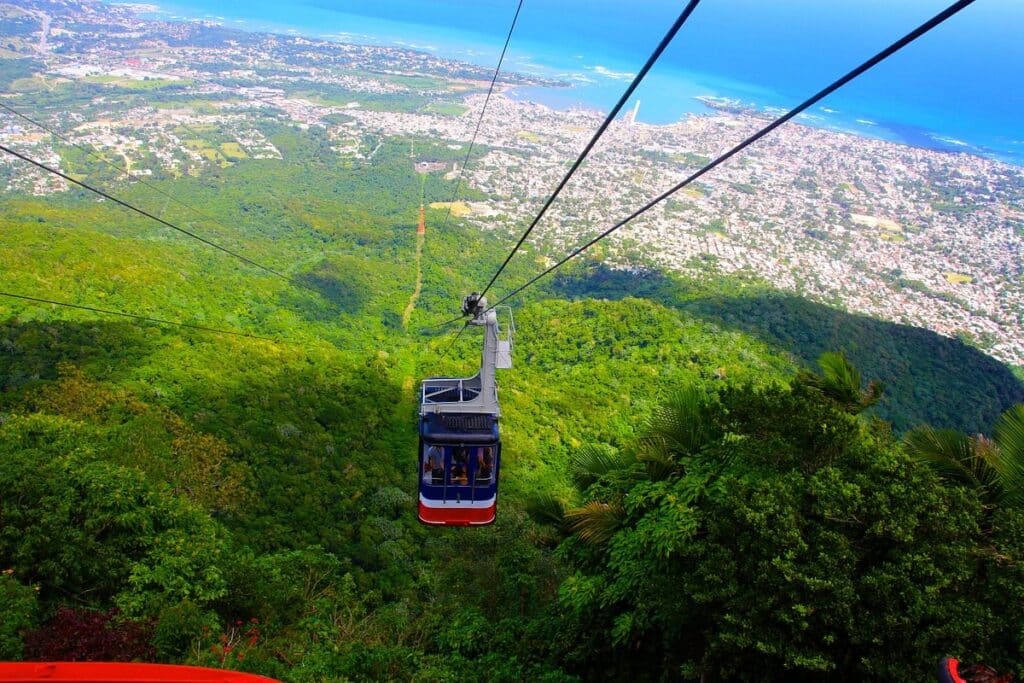
The cable car is the perfect way to see the beautiful Dominican Republic from a completely different vantage point. It’s also the only cable car in the entire Caribbean! El Teleferico as locals know it is located in the Isabel De Torres National park.
You’ll start at the base of the mountain and travel to a height of around 800 meters (2,625 feet) up the peak of Mount Isabel. The 10-minute journey above Puerto Plata’s landscape takes you to the top, where you can explore beautiful gardens. At the top, you’ll also find a smaller version of the Christ the Redeemer statue.
El Limón waterfall
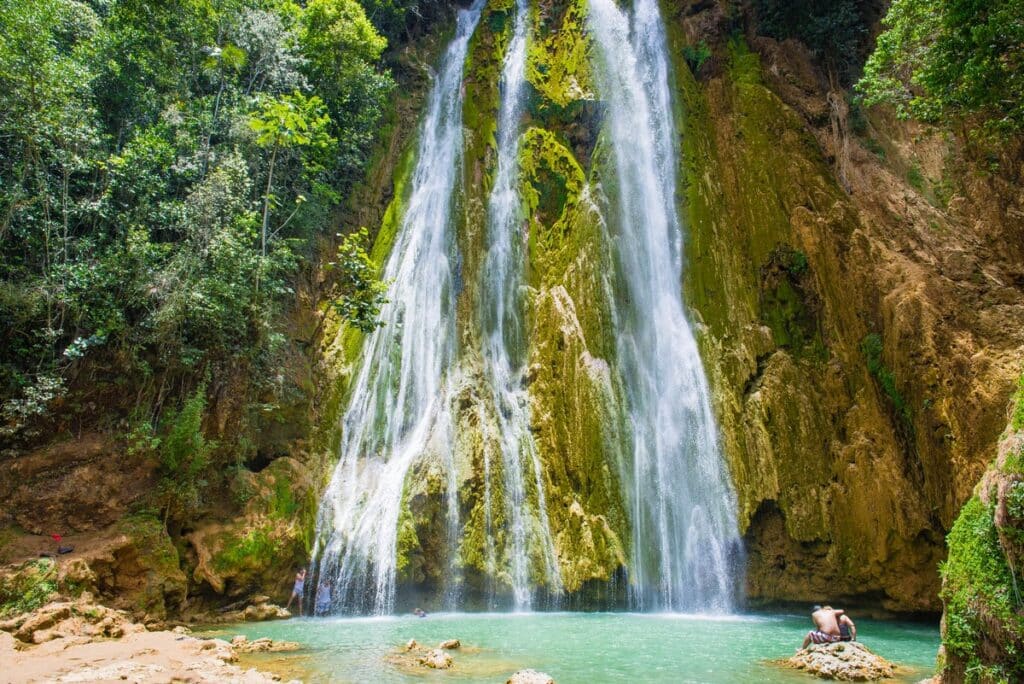
To get to this beautiful 40 meters (130 feet) high waterfall, you need to trek a 2.5-kilometer (1.5-mile) journey. The route takes you through thick, lush rainforests, and you can complete it on foot or horseback. Keep an eye out for interesting fauna and flora on the way.
For an even more adventurous journey, you can canoe through the El Limón river to the falls. Once you reach the falls, you can jump into this natural swimming pool to enjoy the refreshing water.
Pico Duarte
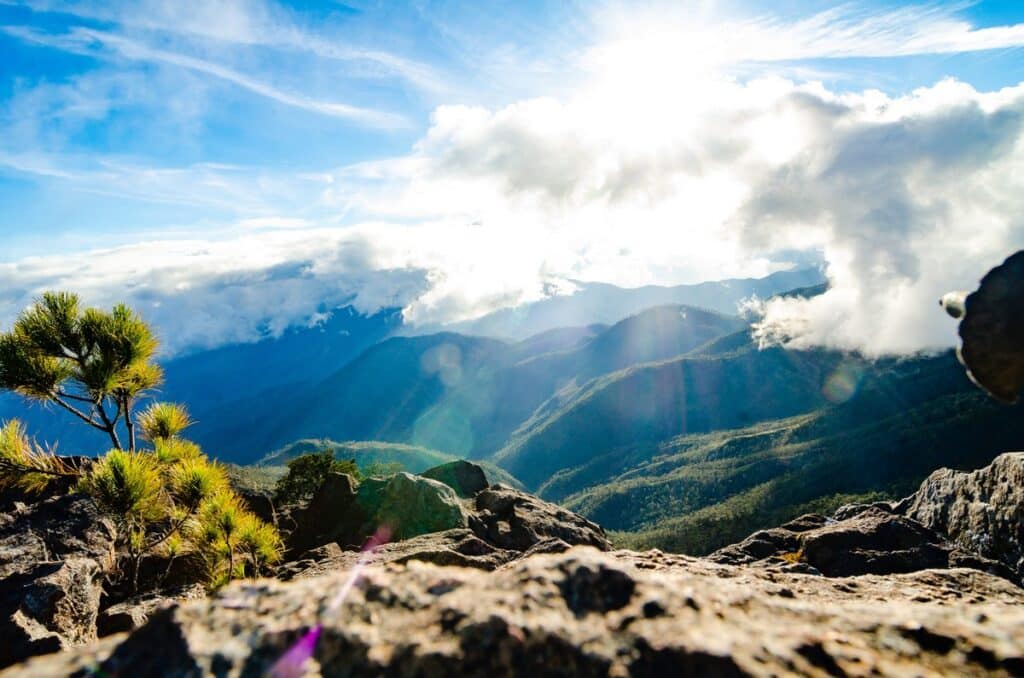
Pico Duarte is the highest mountain peak in the Caribbean, rising at 3,087 meters (10,125 feet). It’s nestled among the two national parks of José del Carmen Ramírez and Armando Bermúdez. You can hike up the top on either the two or three-day excursions on offer. If you are a mountain biker, you are in luck as there are all kinds of cycling routes set out through the area. Pico Duarte is an absolute must for the adventure seeker!
The 27 Waterfalls
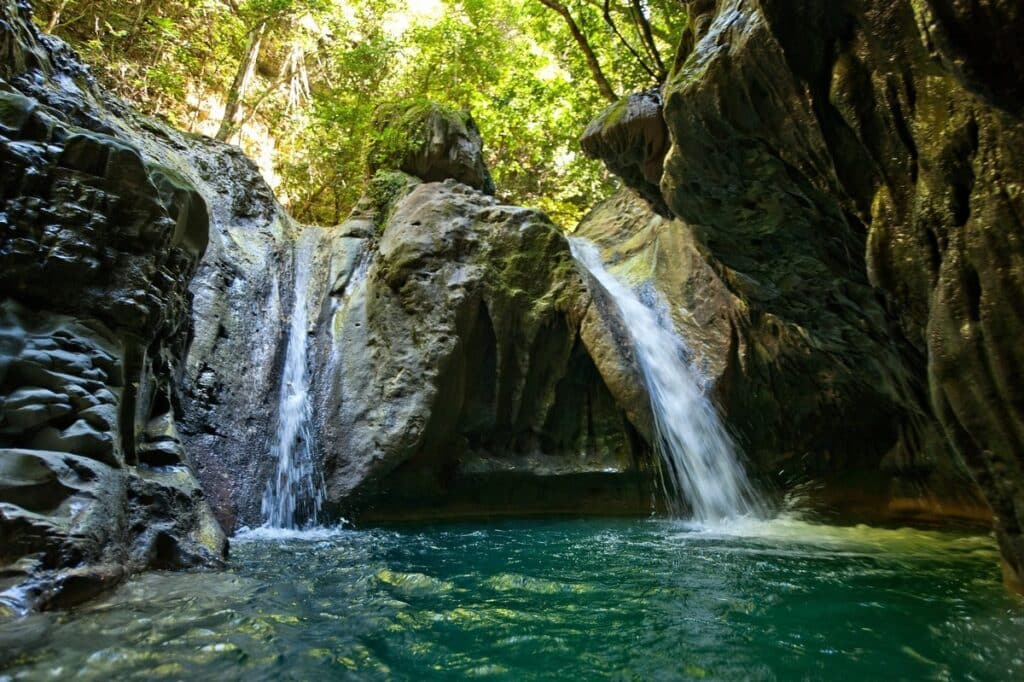
The 27 waterfalls, or the 27 charcos de Damajagua as locals know it, rank as one of the top things to do in the country. You hike through a tropical forest until you reach a rocky hilltop. From here, you make your way down by jumping and sliding down 27 waterfalls to the bottom.
Some of these jumps can be up to 7.6 meters (25 feet) high. Fortunately, there are also wooden stairs if you want to skip these exhilarating jumps. If you don’t want to do all 27 waterfalls, there is also an option to do around 7.
Constanza
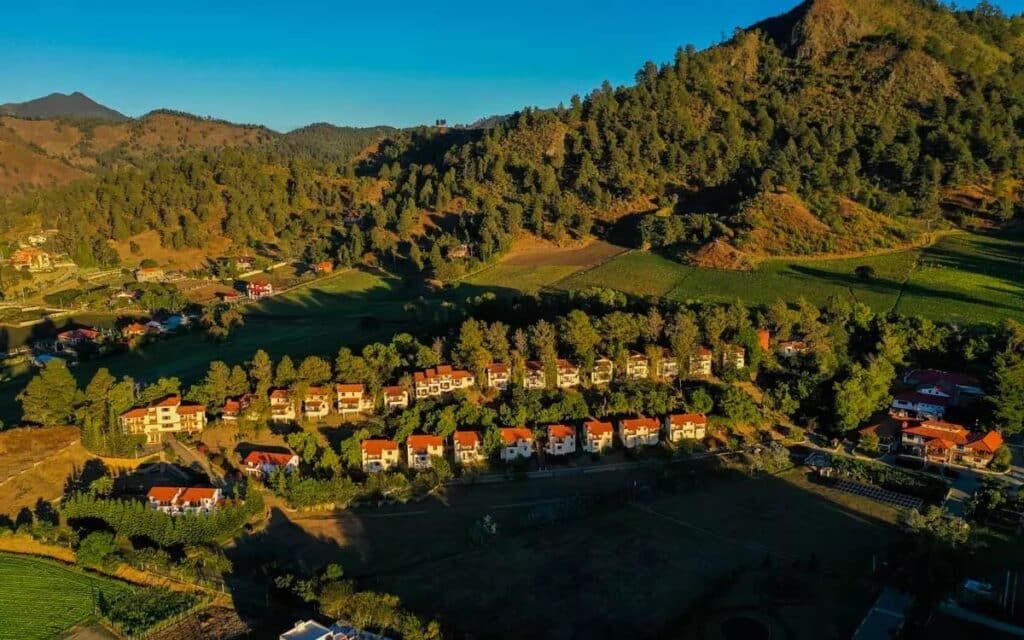
Constanza is the highest altitude town in the entire Caribbean region, with an average elevation of 1,200 meters (4,000 feet). It can even snow here! This area is the country’s breadbasket as vast fields of vegetables, fruits, and flowers are grown here. Constanza is the ideal spot for adventure tourists and nature lovers. Once you’ve stayed in one of the cute mountainside villages, you’ll see why this region is known as “the Switzerland of the Caribbean.”
Larimar
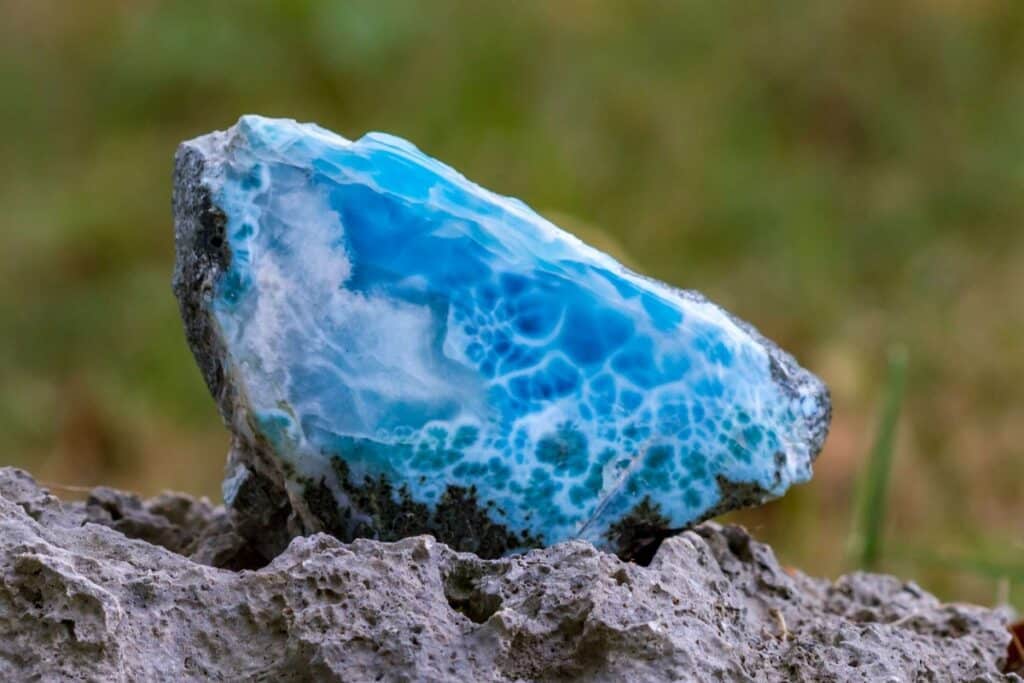
Larimar or blue pectolite is one of the Dominican Republic’s most prized treasures. It’s an extremely rare gemstone you can only find in the Bahoruco hills in the country’s southwest and nowhere else. The stone is also known as “Stefilia’s Stone.”
You can join a hiking excursion to the mining region and see precisely where workers extract the stones. Buying an item made out of larimar is the perfect souvenir as the stone’s color is reminiscent of the seawater’s color.
Dominican Amber
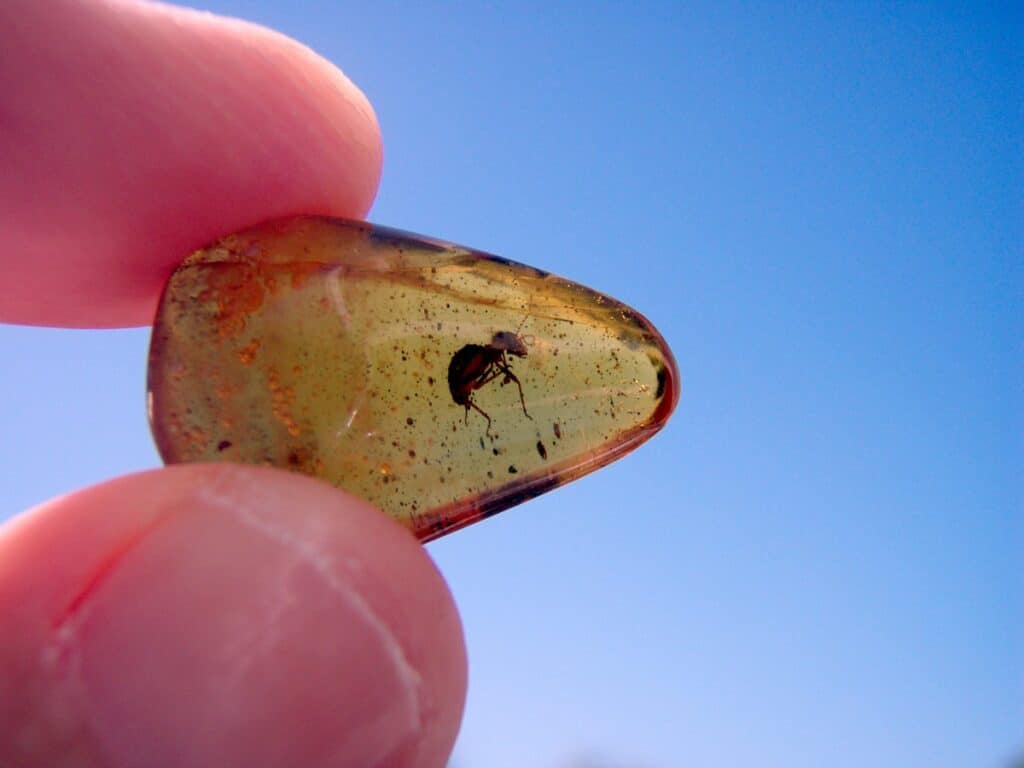
Jurassic Park introduced the world to Dominican amber, and this is one of the stones that the island is also known for. Locals say that Dominican amber was even offered to Columbus in 1492 when he arrived on the island.
You can learn all about this stone’s history in the Amber Museum in Puerto Plata. These stones are mined on the north coast in the La Cumbre hills. This is also the only spot in the world where you can find blue amber.
Sanctuary for the Marine Mammals of the Dominican Republic
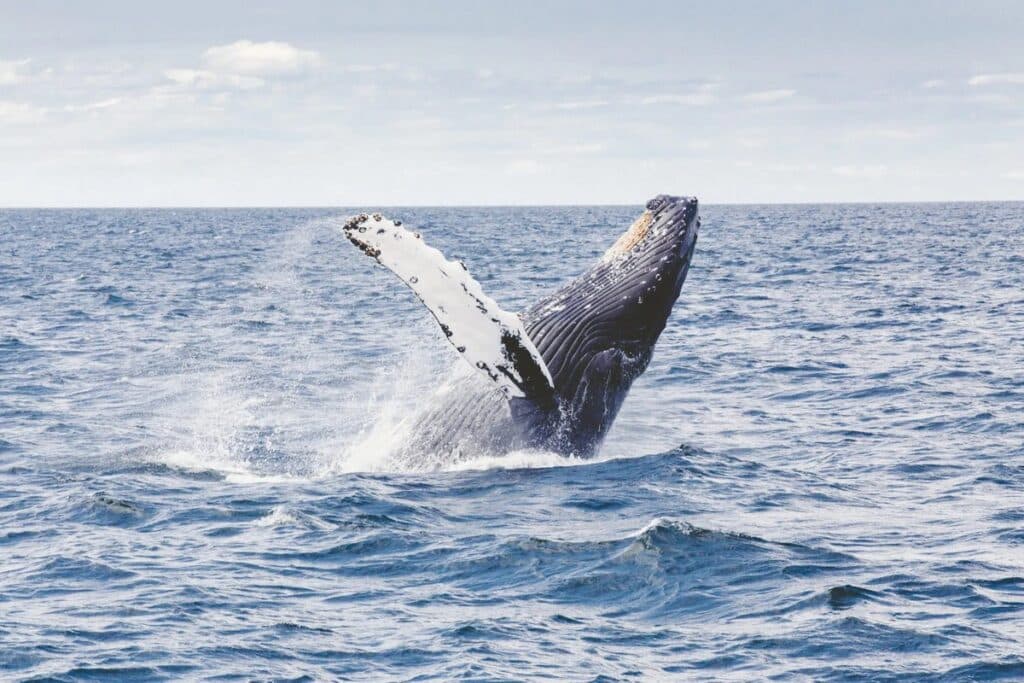
The Silver Bank sanctuary area plays host to thousands of migrating North Atlantic humpback whales every year. An estimated 5000-7000 whales pass through this relatively small sanctuary of approximately 100 square kilometers (40 square miles) every winter. Visitors can take a boat cruise to view these majestic animals up close every year between mid-December and late March.
Fortaleza San Felipe
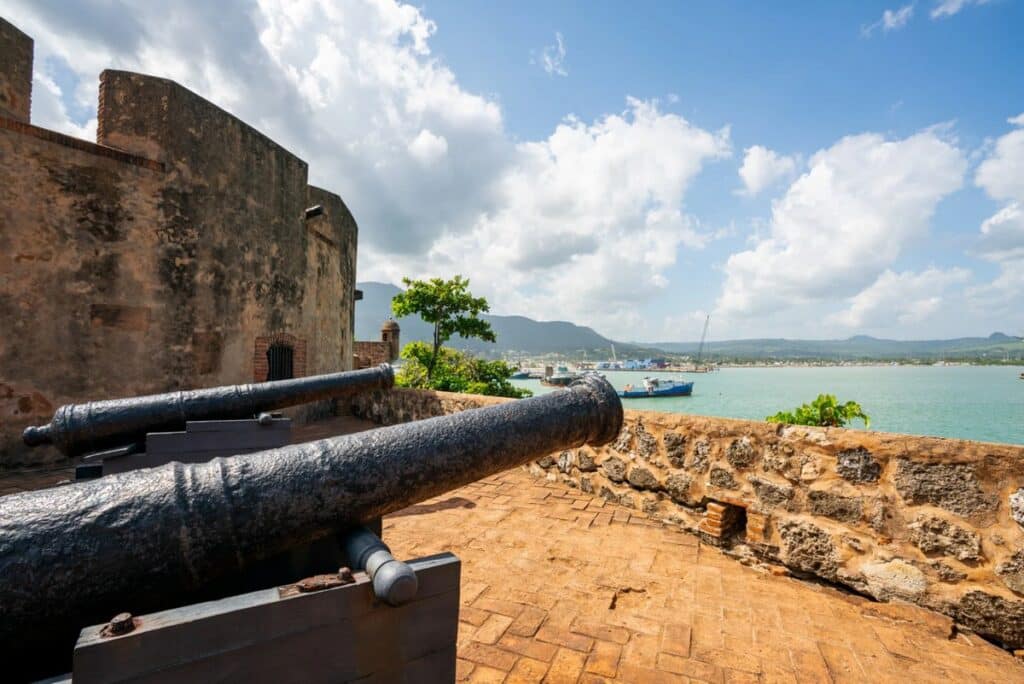
King Philip II of Spain gave the orders to construct Fort San Felipe in the 16th century. The fort had to defend the city from British and Dutch invaders but also the French pirates that were in search of gold and silver. The fort served as a prison from the 19th century through the years of the Trujillo dictatorship.
Today you can visit it as a museum and see some of the original canons that are left, ancient weapons and secret chambers. If you are visiting, stay to catch the sunset from the foot of the fort.
Alcázar de Colón
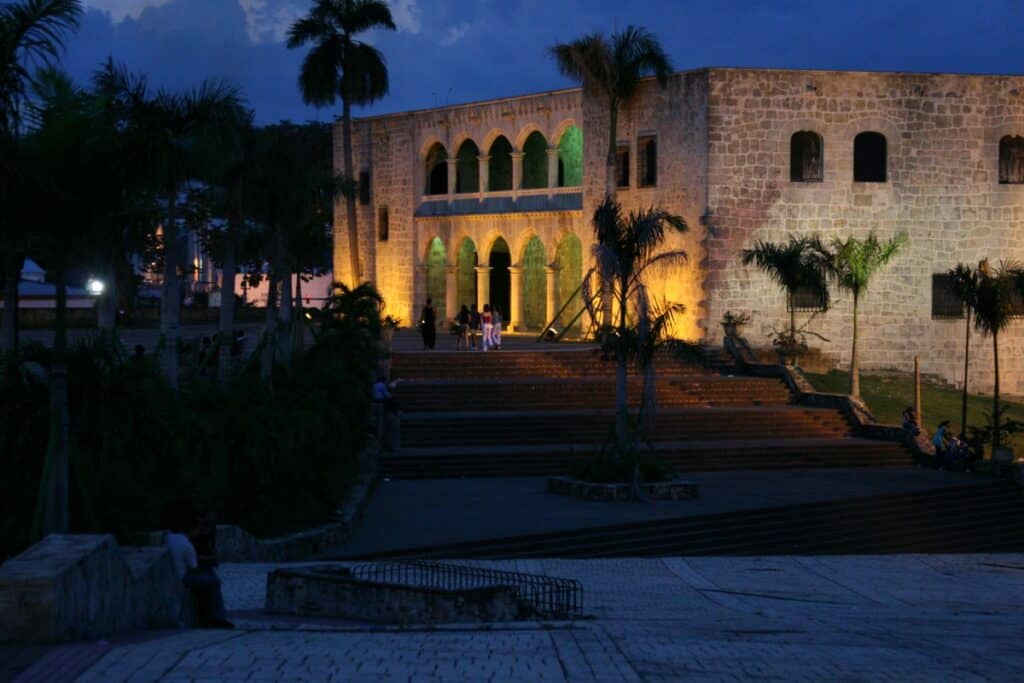
Alcázar de Colón is one of the most well-known museums in the country’s capital, and it forms part of the city’s UNESCO World Heritage Site. The Spaniards completed this Gothic and Renaissance-style palace in 1512. It was built to be the home of Christopher Columbus’ son, Diego Columbus, and his wife, María de Toledo, niece of King Ferdinand of Spain.
Carnival
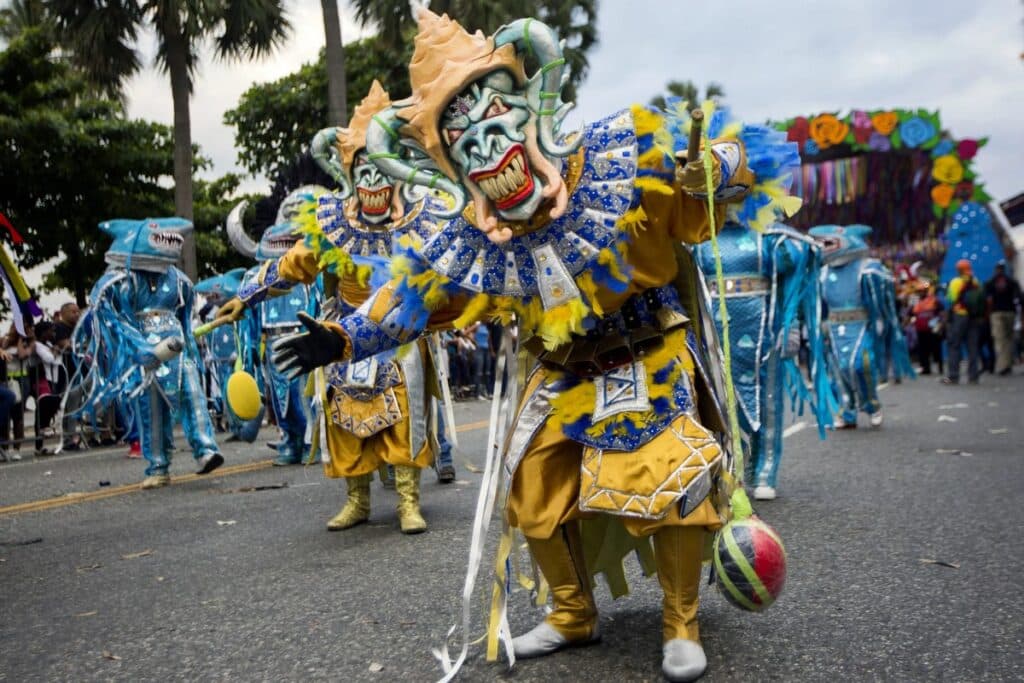
Suppose you are lucky enough to be in the Dominican Republic during February, then you have to attend carnival celebrations. Dominican Carnival, or as locals call it, Carnaval Dominicano, is held every Sunday in February (and in some regions also in March).
It’s a loud and colorful celebration of the Dominican culture, and locals of all ages and regions join in to enjoy the parades with their loved ones. The most popular is the La Vega Carnival, followed by Santiago. Other cities hosting parades include Santa Domingo, Bonao, Puerto Plata, Barahona, Río San Juan and Montecristi.
Altos de Chavón Ampitheahter
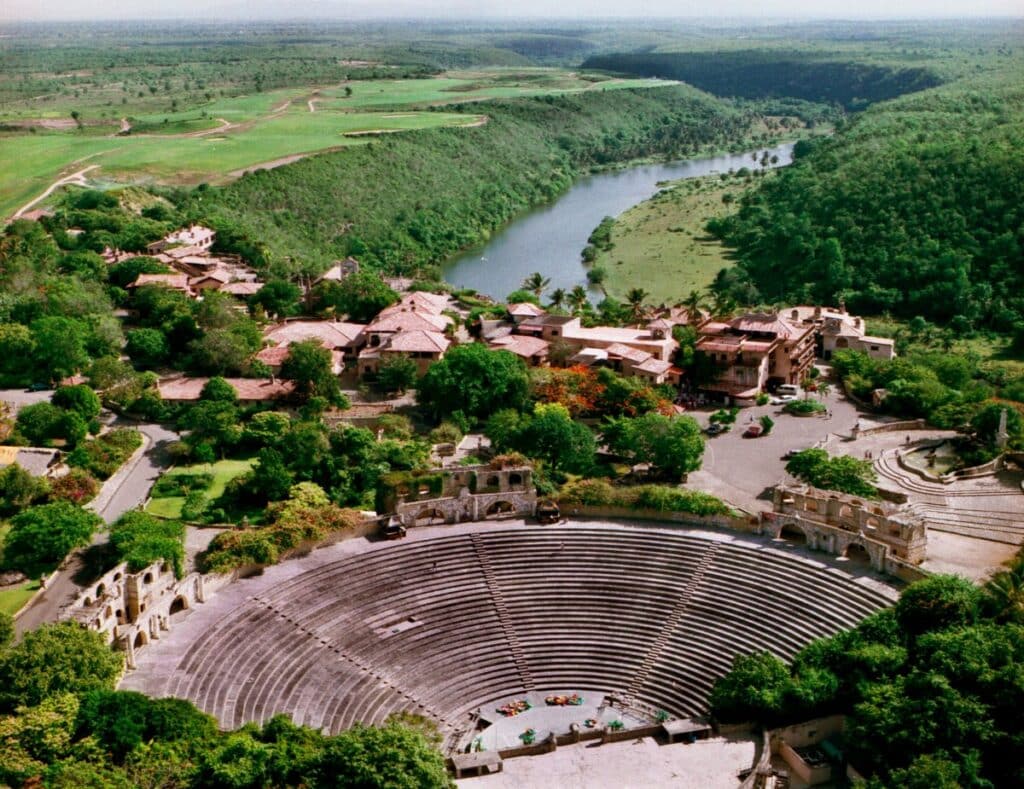
This incredible 5,000-seat open-air amphitheater hosts concerts and performances year-round. It is designed as a Grecian amphitheater, and Frank Sinatra did the inaugural event when it opened in 1982. Seeing a concert here under the stars is an unforgettable experience if you ever get the chance.
Barceló Rum Historical Centre
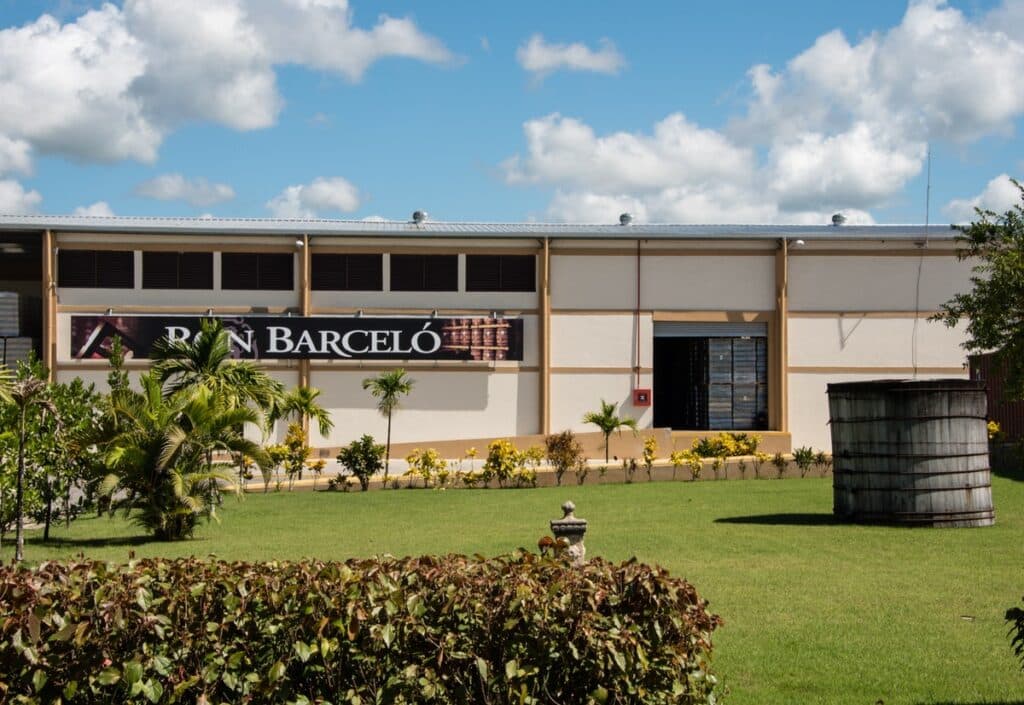
You can’t visit the Caribbean and not enjoy the local drink. You can see this historical center of one of the country’s top rum brands in the city of San Pedro de Macorís. The center offers a comprehensive museum display depicting the history of rum in both the culture and the country. And, of course, you can taste the Barceló rum on offer at their on-site bar.
Brugal Rum Distillery
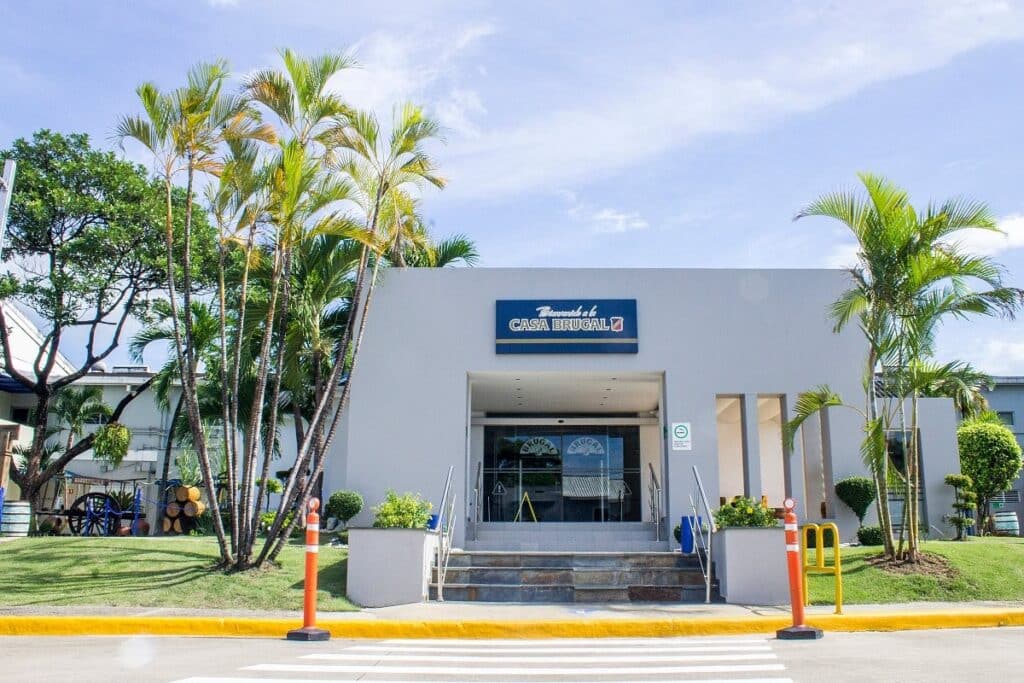
This distillery is another unmissable stop for the rum-lover or just for anyone that appreciates the Caribbean’s finest drink. Brugal rum has been the biggest producer of traditionally made rum in the country since 1888. When visiting, you can tour the distillery and, of course, enjoy a rum tasting.
Cabral
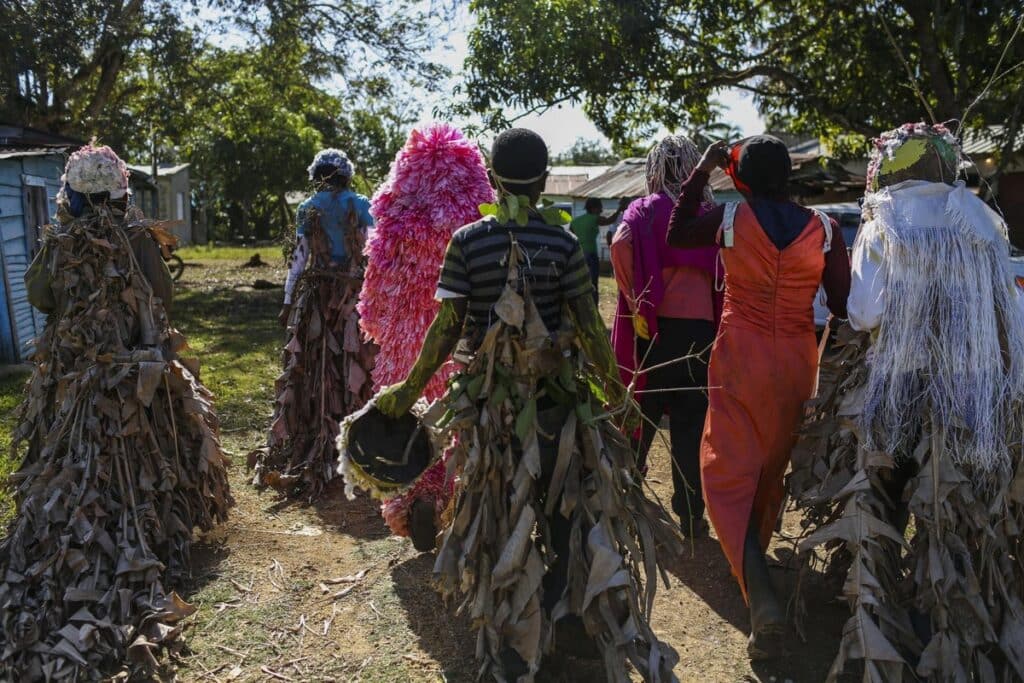
The end of Easter is the time to visit Cabral as it then becomes home to a colorful carnival called Cimarrón. Cimarrón displays the country’s surviving syncretic religion and African traditions. During this festival, the cachuas dress in bat-like costumes and wear masks with horns while carrying whips. These characters impersonate the previous colonial enslavers and their abused enslaved people.
The World’s cigar capital
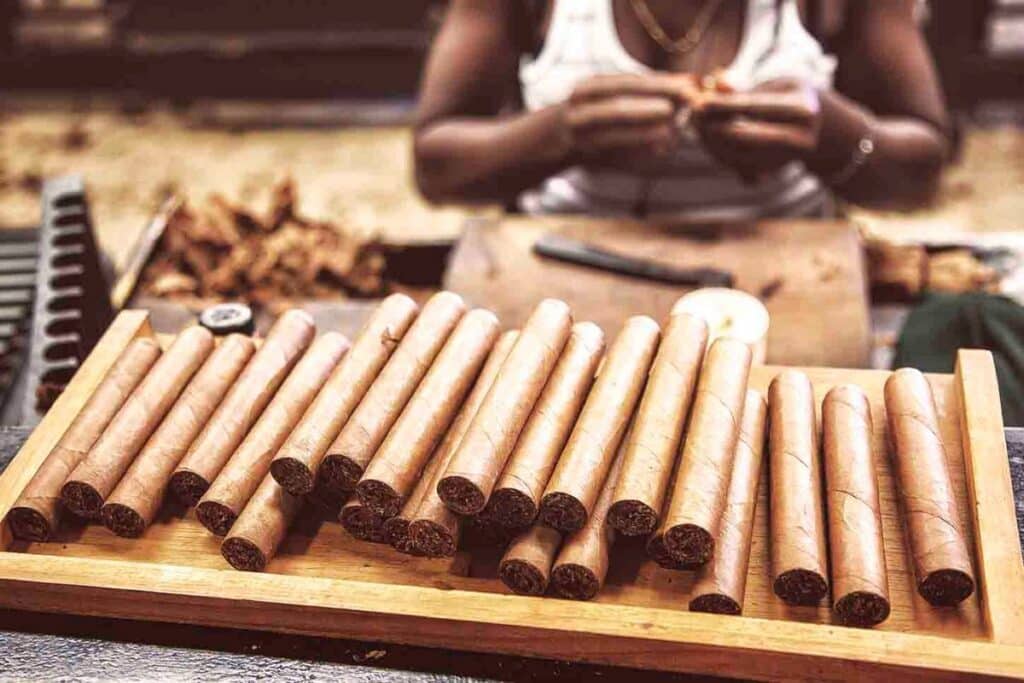
You would be forgiven for thinking the world’s cigar capital is Havana when it’s actually Santiago. Eleven of the world’s top cigars are manufactured here. In addition, every year, the ProCigar Festival is held here. The festival includes organized visits to both cigar factories and tobacco fields at companies such as La Aurora, Davidoff, General Cigar, etc.
Bahia de Las Aguilas
This is probably the most off-the-beaten-path destination on the list. The Bahia de Las Aguilas is situated in the Jaragua National Park, close to the Haitian border. It’s a breathtaking eight-kilometer (4.9 miles) stretch of beach with clear water and a white sandy bottom.
As it’s so remote, it’s one of the most pristine beaches in the country. If you make it here, you’ll be rewarded with the unspoiled beauty and distinctly different landscape. The environment here is semi-arid, so you’ll find largely cacti and scrubs.
Convento de los Dominicos
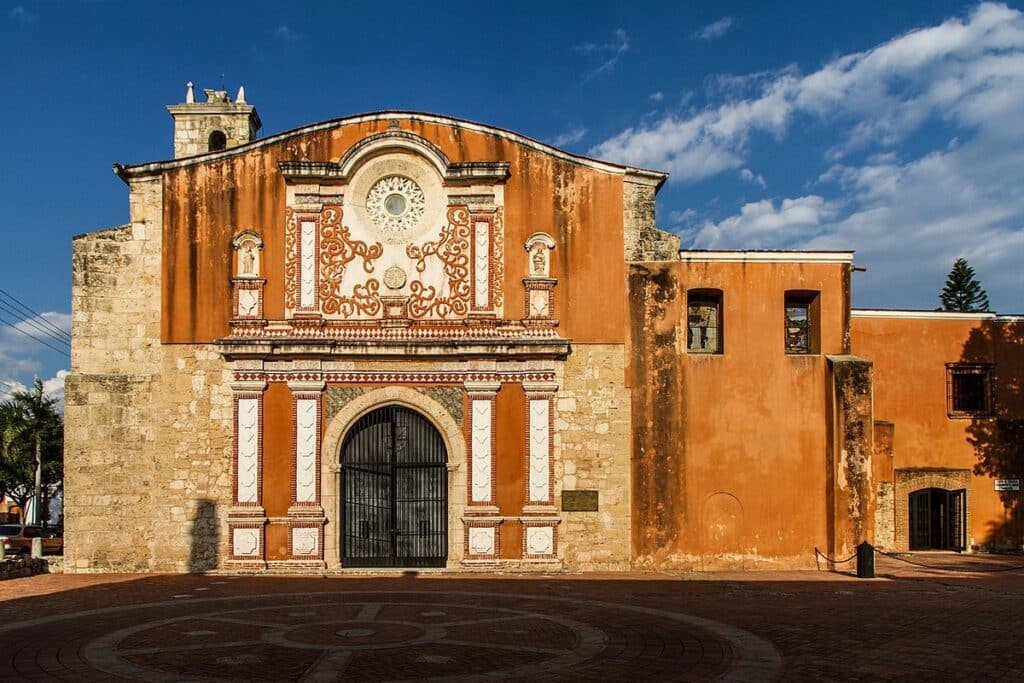
This is one of the oldest European buildings on the American continent today. Construction began around 1510 when Spain sent 15 friars to the colonial city of Santo Domingo. Today it’s the oldest Catholic building in continuous use. However, according to UNESCO, it was also the headquarters of the first university in the Americas. Today the building forms part of the UNESCO Heritage Site, the Colonial City complex.
Cueva de las Maravillas
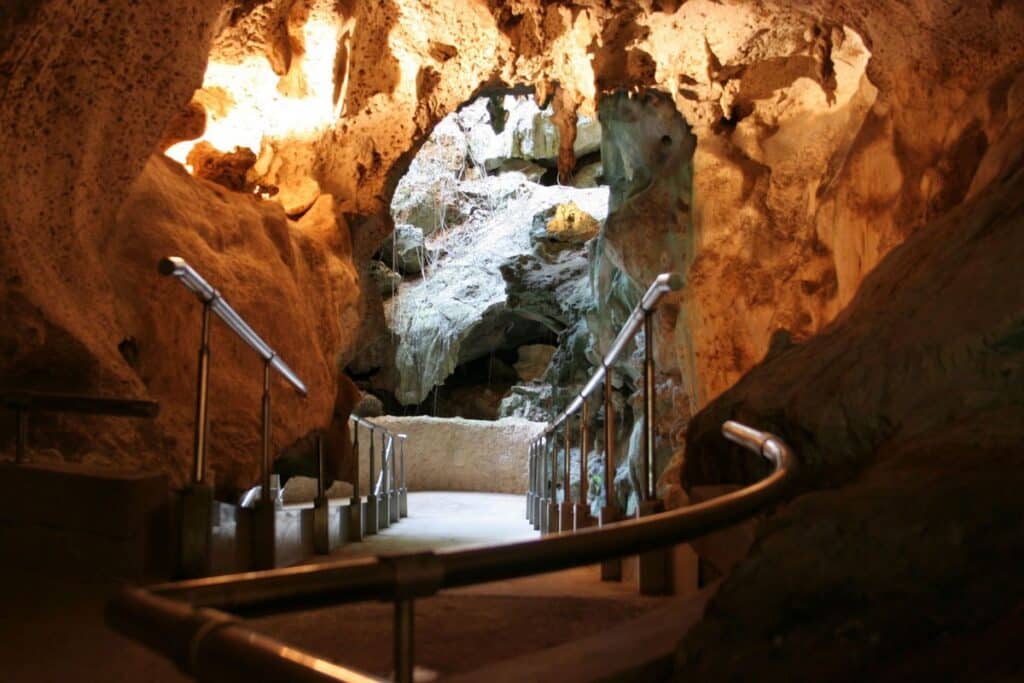
These marvelous caves contain hundreds of preserved Taino pictographs and petroglyphs that date back thousands of years. The cave itself is estimated to be over 100,000 years old. You can visit these caves, and a tour takes you into a deep cavern. Here you can also see an impressive collection of stalactites and stalagmites.
Faro A Cólon
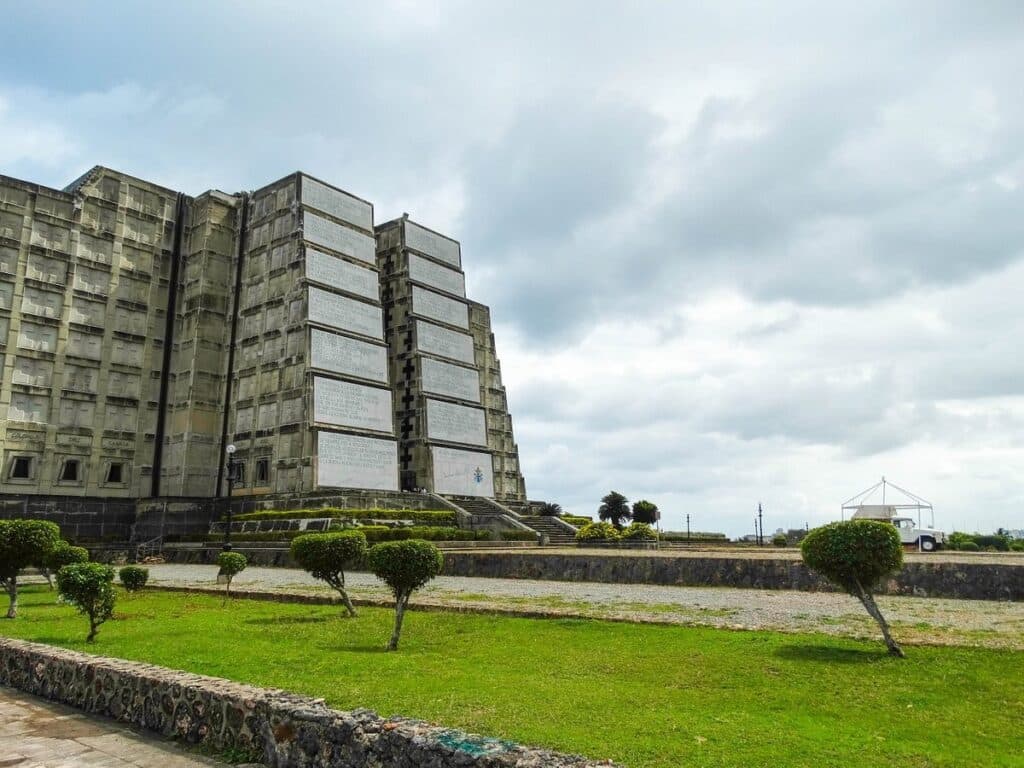
The Columbus Lighthouse, built in the shape of a cross, is said to contain the remains of Christopher Columbus. So this building doubles as a museum and a mausoleum. Although the building can easily be mistaken for an office building, it does have an exceptional element. The lighthouse projects a cross-shaped beam that’s so bright that you can see it from the shores of Puerto Rico.
Fortaleza Ozama
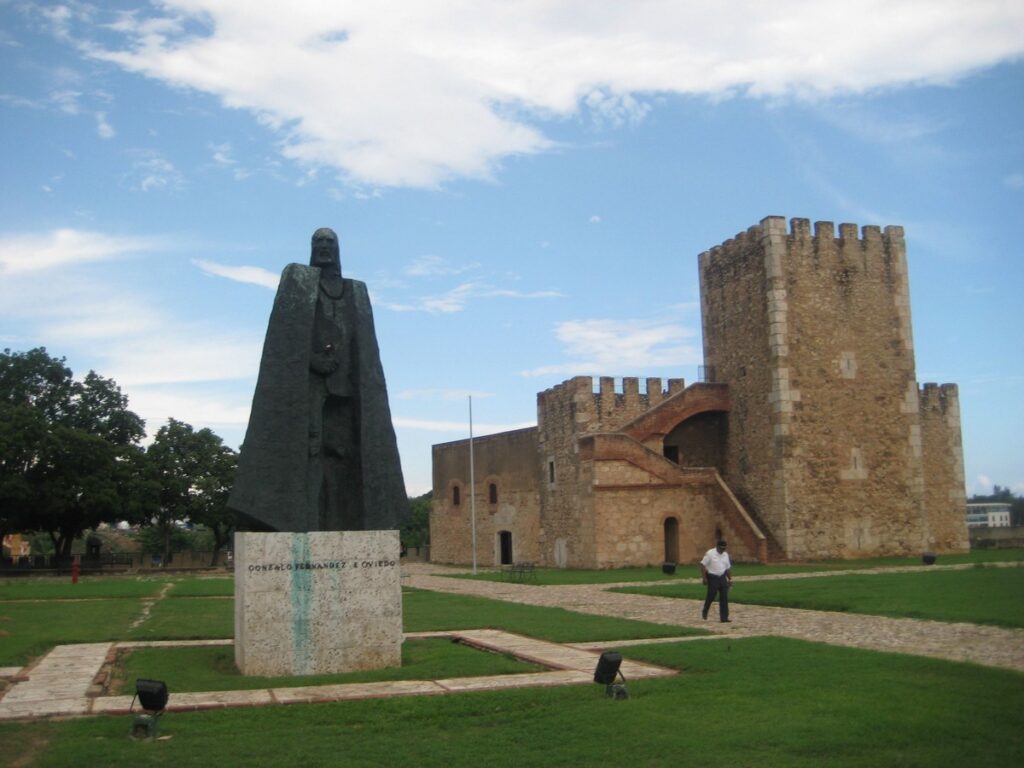
Also known as the Santo Domingo Fortress, the Spaniards erected the building at the mouth of the Ozama River in the country’s capital. It was the first military construction of the new Spanish colony. Therefore, the fort is recognized as the oldest military construction of European origin in the Americas. This makes it one of the jewels in the World Heritage Colonial complex.
Fortaleza San Luís
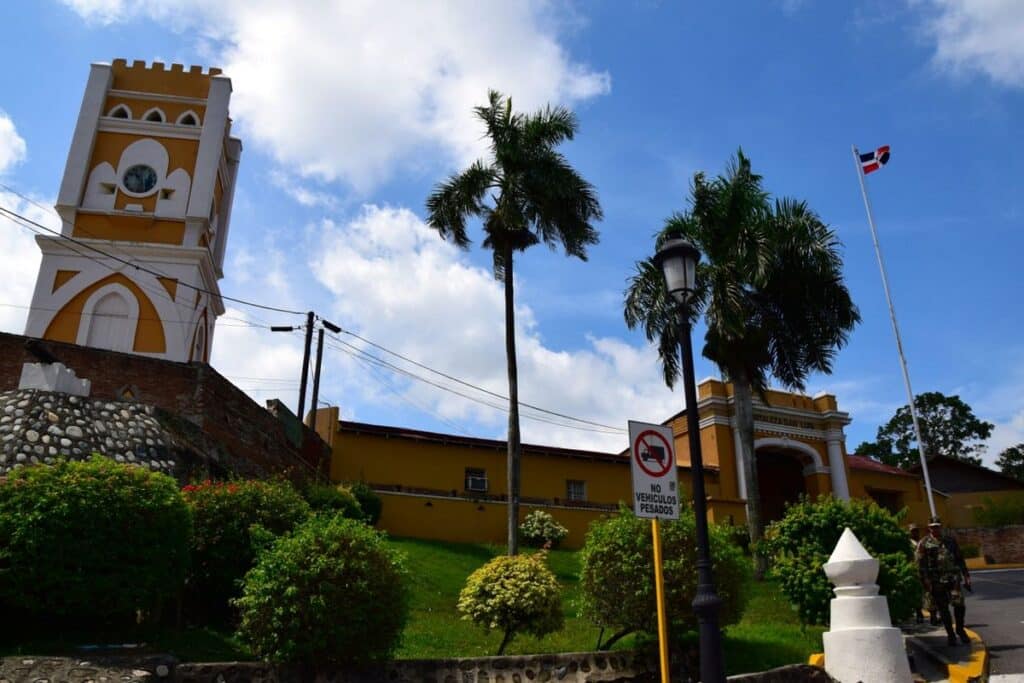
This fort is one of the most important buildings in Santiago de los Caballeros. Built in the early 19th century, it served as a key defense post during the War of Restoration. The US Marines also used it as a base during the first US occupation of the Dominican Republic from 1916 to 1924. You can now visit this renovated fort as a small military museum and see its ancient weapons, tanks, and artillery collection.
The Merengue
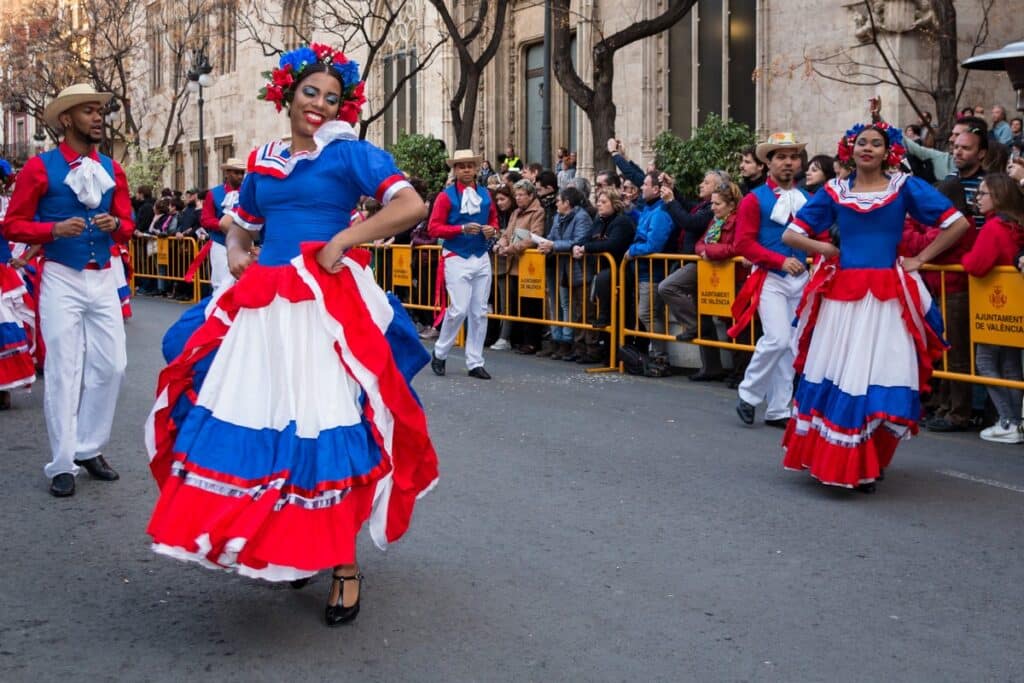
The Merengue type of music and dance was born in the country, and the music and dance seem to represent the spirit of the entire country. Therefore it’s considered the national dance of the country and one of the standard Latin American dances. There are numerous dance classes in the country where you can drop in for a lesson and get to know this part of the culture first-hand.
Baseball players

This might seem like a surprising item on the list, but the country is known for producing some of the world’s best baseball players. The Dominican Republic currently also produces the most foreign players in Major League Baseball. In 2021, there were 980 Dominican-born players on opening-day rosters. That’s more than Venezuela and Cuba combined.
The Dominican flag, the national dish

This island has plenty of incredible dishes, but the most well-known is la bandera dominicana (the Dominican flag). The dish consists of three basic ingredients: white rice, red beans, and stewed chicken or beef. These components are the foundation. To this toppings such as avocado, tostones (flattened fried plantain), cooked eggplant stew, or green salad with tomato are added.
